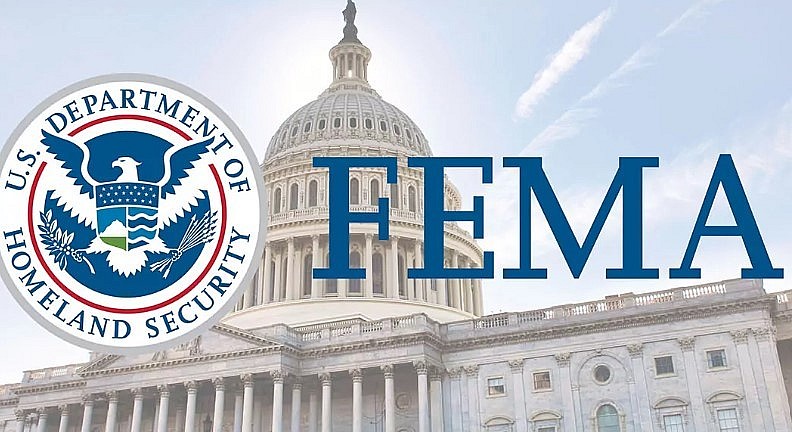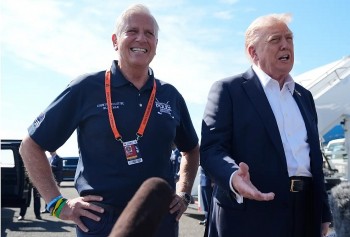FEMA’s Billion-Dollar Blunders: How Taxpayer Money Vanished Into Thin Air
 |
| FEMA’s History of Wasteful Spending |
Over the years, multiple government audits have revealed that the agency has squandered tens of billions of taxpayer dollars. From its handling of the COVID-19 pandemic to its response to hurricanes and migrant housing efforts, FEMA’s financial inefficiencies have led to widespread criticism and calls for major reforms.
FEMA’s History of Wasteful Spending
FEMA was established by executive order under President Jimmy Carter in 1979, intended to coordinate disaster response efforts at the federal level. However, over time, the agency has been plagued by inefficiencies, mismanagement, and lack of proper oversight, leading to excessive waste of funds. The House Oversight and Government Reform Committee (OGR) has previously documented FEMA’s history of financial mismanagement, including wasteful spending on mobile homes for displaced disaster victims.
These homes, costing up to $150,000 each, were often given away or sold at a loss after their use. The misallocation of resources, combined with bureaucratic dysfunction, has continually raised concerns about FEMA’s ability to fulfill its mission effectively.
COVID-19 Relief Mismanagement
One of the most glaring examples of FEMA’s financial mismanagement was its handling of COVID-19 relief funds. According to a January 30 audit by the Department of Homeland Security’s Office of the Inspector General, FEMA mismanaged nearly $10 billion in pandemic-related expenditures between 2020 and 2023. The agency approved a staggering $1.1 billion grant that was backed by only a single piece of paper with no itemized costs, violating fundamental financial accountability principles. Moreover, the funding request was not prepared by a licensed professional engineer or cost-estimating expert, raising serious concerns about how taxpayer money was allocated.
In another instance, FEMA allocated $1.5 billion to a single state for medical staffing without proper vetting, a move that could have redirected funds to other pressing disaster relief efforts. Additionally, $8.1 billion in costs remain undetermined as allowable expenses, further highlighting FEMA’s poor oversight and mismanagement.
Fraudulent Spending on Migrant Housing
The misallocation of funds is not limited to pandemic relief efforts. In early 2024, it was revealed that FEMA had spent $59 million to house migrants in luxury hotels in New York City. The Department of Government Efficiency (DOGE), a newly formed watchdog agency, flagged the expenditure as illegal and in violation of a presidential executive order. As a result, four FEMA employees, including the Chief Financial Officer, were fired over the payment, and efforts were initiated to recover the funds.
Over the last two years, FEMA has reportedly disbursed more than $1.4 billion in housing and aid for migrants. However, a 2023 audit by the DHS Office of the Inspector General found that $110 million in humanitarian relief funds provided to local organizations lacked the necessary documentation or receipts to justify their use. Some of the aid was also distributed to illegal migrants, violating federal funding guidelines.
Inefficiencies in Disaster Relief Funds
FEMA’s fiscal irresponsibility extends beyond the pandemic and migrant housing. During the devastating 2024 hurricane season, the agency faced backlash for failing to properly allocate funds for emergency response. After Hurricane Helene struck the southeastern U.S., followed closely by Hurricane Milton in Florida, FEMA reported a shortage of funds. However, Congress had just approved an additional $20 billion in emergency funding, of which FEMA spent $9 billion in just over a week. Critics, including Florida Congressman Matt Gaetz, accused FEMA of misappropriating taxpayer funds and failing to deploy resources efficiently.
An August 2024 audit uncovered that FEMA had wasted $7 billion in unliquidated funds that could have been returned to the Disaster Relief Fund. The report noted that FEMA’s failure to follow proper financial procedures left billions tied up in state, territorial, tribal, or local government accounts that did not require the funds. The audit further revealed that FEMA’s policies lacked incentives for timely grant closures, leading to prolonged inefficiencies and financial mismanagement.
Congressional and Public Calls for Reform
The extent of FEMA’s wasteful spending has led to bipartisan demands for reform. Former Congressman Garret Graves, a leading critic of the agency, argued that FEMA’s bureaucratic inefficiencies continue to victimize disaster survivors who depend on emergency aid.
Homeland Security Secretary Kristi Noem recently voiced support for dismantling FEMA in its current form, advocating for a complete restructuring of the agency. Similarly, entrepreneur Elon Musk, who has been vocal about government inefficiencies, called for an overhaul of FEMA, citing the organization’s gross mismanagement of funds.
The Trump administration has also proposed a comprehensive reevaluation of FEMA, pushing for increased oversight and stricter financial controls. With a proposed budget of $65 billion for fiscal year 2025, lawmakers and watchdog agencies are urging FEMA to implement better safeguards to prevent further waste and fraud.
The Path Forward: Solutions to FEMA’s Spending Crisis
Addressing FEMA’s longstanding financial mismanagement requires systemic changes in how the agency operates. Several key recommendations have emerged from audits and government reports:
-
Enhanced Financial Oversight: Implementing stricter auditing practices and requiring independent verification of all grant applications before approval.
-
Increased Transparency: Making all FEMA expenditures publicly available to improve accountability and prevent hidden spending.
-
Stronger Accountability Measures: Holding FEMA leadership accountable for financial mismanagement, with real consequences for wasteful spending.
-
Streamlined Bureaucracy: Reducing red tape and administrative inefficiencies to ensure funds are allocated quickly and responsibly.
-
Independent Watchdog Agencies: Expanding the role of agencies like the Department of Government Efficiency (DOGE) to continuously monitor FEMA’s financial activities.
-
Timely Grant Closures: Ensuring that grant funds are liquidated appropriately and unused funds are returned to federal relief programs in a timely manner.
Conclusion
FEMA’s financial mismanagement has resulted in billions of dollars in waste, undermining its core mission to provide disaster relief. From pandemic misallocations to migrant housing controversies and hurricane response failures, the agency’s inefficiencies have placed an unnecessary burden on taxpayers. Calls for a complete overhaul of FEMA are growing louder, with watchdog agencies and lawmakers demanding greater transparency and accountability. As FEMA prepares for a new fiscal year with a $65 billion budget, ensuring financial responsibility and efficiency must be a top priority. Without substantial reforms, the agency risks continuing its legacy of mismanaged funds, leaving disaster victims and taxpayers to bear the consequences.
 What is the FEMA? Scandal Erupts, $59M Migrant Hotels, and More What is the FEMA? Scandal Erupts, $59M Migrant Hotels, and More The Federal Emergency Management Agency (FEMA) has recently found itself at the center of a political firestorm after revelations that it spent $59 million last ... |
 FEMA Scandal: Four Officials Fired Over Unauthorized $59 Million Migrant Hotel Payments FEMA Scandal: Four Officials Fired Over Unauthorized $59 Million Migrant Hotel Payments In a shocking revelation, the Department of Homeland Security (DHS) has terminated four Federal Emergency Management Agency (FEMA) employees for unilaterally authorizing a $59 million ... |


























